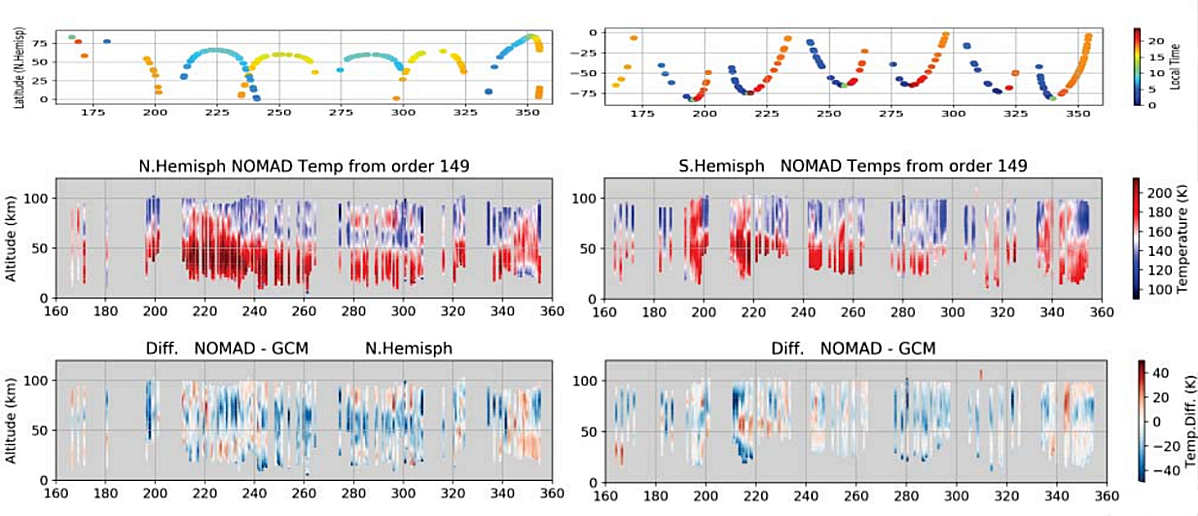RCP/KOPRA goes Mars!

A recent paper by Miguel-Angel López Valverde (IAA/CSIC, Spain) et.al. (Martian atmospheric temperature and density profiles during the 1st year of NOMAD/TGO solar occultation measurements, accepted for publication in JGR-Planets 2022) shows temperature and density profiles from the second half of Martian Year 34, covering two seasons from April 2018 to March 2019 where the NOMAD/TGO instrument on the ESA ExoMars Trace Gas Orbiter measured infrared solar occultation spectra in the range 2.3 to 4.3 μm. These profiles have been retrieved by our successful RCP/KOPRA processor used for two decades now to derive terrestrial atmospheric state and trace gas distributions from infrared emission spectra obtained by the ESA ENVISAT/MIPAS mission between 2002 and 2012.
The solar occultation NOMAD-SO instrument channel produces infrared spectra from the incoming light using an Acousto-Optic Tunable Filter (AOTF). This allows sweeping through the spectral windows at a fixed detector position by changing the frequency of the wave producing the grating pattern. The region around 3 μm in diffraction order 149 has been specifically selected to derive the temperature profiles for the northern and southern hemisphere seen in the center pictures above. The upper pictures show martian latitude and local solar longitude of the corresponding measurements. The bottom row presents the differences of the retrievals to a global martian climate model. Significant warming caused by a global dust storm can be seen, as well as a previously unknown warm layer around 80 km, probably caused by strong thermal tides.
A follow-up article on the water distribution has already been submitted: Adrian Brines (IAA/CSIC, Spain) et.al., "Water vapor vertical distribution on Mars during perihelion season of MY 34 and MY 35 with ExoMars-TGO/NOMAD observations", JGR-Planets, under review.
